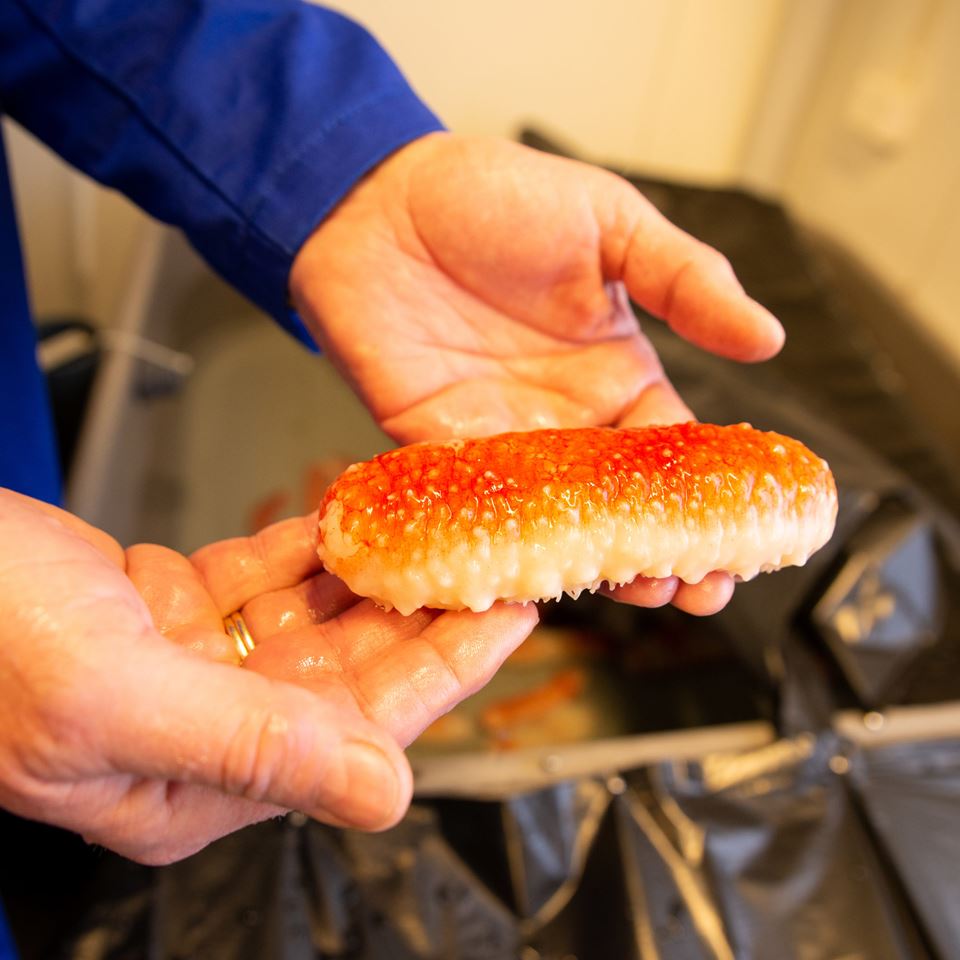A number of different studies have shown that sea cucumbers contain substances such as anti-carcinogens, antioxidants and anti-inflammatories that can help us combat diseases and conditions such as arthritis, obesity, diabetes and fatigue. Farming of these animals is thus a hot topic.
Jan Ove Evjemo is a researcher at SINTEF Ocean, Norway, and shows us a photogenic sea cucumber that lives in Norwegian waters. “No-one has yet succeeded in getting our sea cucumbers to spawn and produce larvae that have developed into adults”, he explains.
We’re standing in a laboratory, installed with an open tank containing tens of these sea cucumbers. Is it possible that these beautiful creatures might herald the launch of a new health products boom for the aquaculture sector? Sea cucumbers contain a lot of stuff that is good for us, and a research team is currently working to find out how it might be possible to farm them commercially.
Spawning is the main challenge
SeaLab’s sea cucumbers have been living in their tank for two months. The aim of the project is to get them to produce offspring during the 2020 season.
“Our main challenge is to get the animals to spawn and then identify effective ways of feeding the larvae. This is the exciting aspect of our work”, says Evjemo.
Sea cucumbers spawn in the same way as fish. The female produces eggs that are fertilised by male sperm in water. After hatching, the larvae are free-swimming for a short time before they seek out the bottom where they live out the rest of their lives.

A delivery of tens of sea cucumbers was made to SINTEF Ocean’s SeaLab a couple of months ago. They are now living in a two-metre square tank. Research scientists Jan Ove Evjemo and Antonio Sarno will be looking into the commercial farming and exploitation of this species. Photo: Håvard Egge
Stress testing
Since Norwegian sea cucumbers are not so different from those found in Asia, the researchers will be aiming to test out a number of the farming methods employed in the Far East.
“Our plan is to get the animals to spawn by exposing them to a variety of environmental stresses”, explains Evjemo.
The research team will be carrying out experiments involving variations in physical and chemical parameters such as temperature, light, water flow and water quality.
“By testing these different parameters I believe we will find a successful combination”, says Evjemo.
A number of different studies have shown that sea cucumbers contain substances such as anti-carcinogens, antioxidants and anti-inflammatories that can help us combat diseases and conditions such as arthritis, obesity, diabetes and fatigue. The potential benefits are enormous.
The sea cucumbers contain large amounts of eggs and sperm, so there is no need to have a particularly large broodstock in order to generate high levels of production.
“This assumes that we are successful in developing a method for feeding the newly-hatched larvae quickly enough, and that we optimise the process such that we achieve adequate levels of survival and growth of the animals to harvestable size”, explains Evjemo.
An exclusive raw material
Once researchers finally get the sea cucumbers to spawn, the long-term plan is to construct an onshore aquaculture facility in which they can be farmed to marketable size. The animals will probably grow faster in a controlled land-based system than they do in the wild. In the oceans they can grow to up to fifty centimetres in length.
“Sea cucumbers can be exploited both as a food, and as a raw material for health products. In China it is common to see them served in restaurants, primarily because of their health benefits”, says Evjemo.
The research project is being carried out in collaboration with health food manufacturers Seafood Home, which produces a dietary supplement entirely sourced from sea cucumbers. The product, called Aminoblue, has been on the market for a little more than two years, and has had very positive feedback from consumers. In the long-term, Seafood Home is planning to develop a greater selection of products.
Aminoblue is made from sea cucumbers harvested from wild populations found near Iceland, but the natural rates of growth of this species are too slow to adequately meet market demand.
“The vast majority of locations where sea cucumbers are harvested have been over-exploited”, explains Evjemo. “This is why it is important to find ways of producing them commercially by farming”, he says.
Evaluating active substances
While at the same time developing an effective farming method for the sea cucumbers, the researchers are also planning detailed studies of the substances they contain.
SINTEF researcher Antonio Sarno is an analytical biochemist, and his job is to look into the bioactive substances found in sea cucumbers.
“It will be very exciting to take a closer look at what kinds of benefits these may have on our health – whether the organism is consumed directly as food, or in the form of extracts used in dietary supplements and medicines”, says Sarno.
He maintains that there already exists solid evidence that sea cucumbers can provide health benefits, combating a number of diseases.
“A number of different studies have shown that sea cucumbers contain substances such as anti-carcinogens, antioxidants and anti-inflammatories that can help us combat diseases and conditions such as arthritis, obesity, diabetes and fatigue. The potential benefits are enormous”, he says.

